




<h1 class="left">Most people wouldn’t associate cosmopolitanism with a small town like Darjeeling. But, in retrospect, I didn’t need to look for it in a big city. Nepali, Hindi, and English mingled fluidly in the hallways at my boarding school. Korea’s Hallyu wave of pop music echoed through dorm rooms alongside the latest English-language hits and the occasional Bhutanese or Tibetan track. At home, my parents went about their day humming to the tunes of rock classics on the radio—Janis Joplin, the Beatles, Bob Dylan. We never paused to theorise the cultural hybridity born of overlapping borders and, by extension, overlapping identities. It simply felt natural.</h1>
<h1 class="left">A few hours away, in Sikkim—where many of my classmates were from—the musical landscape was no less layered, though shaped by a different history. Once a Buddhist kingdom, Sikkim became part of India in 1975. Its Nepali-speaking majority now lives alongside indigenous Lepcha and Bhutia communities, each with its language, customs, and musical rhythms. While India’s cultural roots often reference the contrast of traditions from state to state, India’s Eastern region, while diverse in its origins, has an innate musical gene.</h1>
<h1 class="centre">When the dirty team set out to travel across Sikkim, the agenda was to explore the cultural nerve centre of this expanse of luscious green topography. There amidst the indigenous crafts, the cross-pollination of style and substance, of quaint homes and cute grandmothers that cropped up on our social media feeds in search of the zeitgeist and their habitats, was a scene that instantly felt like the thread that bound this community together. Inside dimly lit cafes, indie girls who possibly worshipped Stevie Nicks and boys weaned on Bohemian Rhapsody, were perched on carpets, bopping their heads and whooping to an incospicuously dressed boy, belting notes from a set of pipes that could belong to a potential star in the making. This is a weekend ritual of sorts. A purpose that makes them come together in celebration.</h1>
<h1 class="right">In Sikkim, weekends see youngsters gathering at local watering holes for a jamming session— a homegrown band will perform, and the spectators sitting on the floor would whoop and clap to the beat. Music invariably just courses through the veins of the land. But it goes beyond being treated as a knitting hobby to collect aura points.</h1>
<h1 class="right">Consider Girish and The Chronicles, a rock band from Gangtok, whose recent thunderous rendition of Adele’s “Set Fire to the Rain” (2011) on America’s Got Talent captured international attention. Their rise marks part of a broader artistic resurgence in the landscape. Sikkimese musicians now compose in Nepali, Lepcha, Bhutia, and English, often blending languages and styles into hybrid forms that resist the flattening homogeneity so often expected of remote regions. A kind of musical spring is underway, asserting Sikkim’s place as a cultural nerve centre of Himalayan cosmopolitanism.</h1>
<h1 class="centre">Salakhala, a Sikkimese band formed in 2017, takes its name from a Nepali word used by vegetable sellers. “Salakhala” means you don’t get to choose—whatever the scale scoops up, bruised or fresh, is what you take. That sense of accepting what comes runs through their reggae-tinged songs, sung in colloquial Nepali.</h1>
<h1 class="centre">Their lyrics often feel like overheard conversations—paintingoffering vignettes of daily life and subtle social critique. One of their best-known tracks, Ek Peg, addresses alcoholism: “Bhai, malai ek peg haali-deu. Ghar jaana man chaina malai. Buji deu.” (“Brother, pour me a peg. I don’t want to go home. Please understand.”) Another, Paltan (“Army”), mimics the bark of drills—“Chhati kholai, kando tight – left right left right” (Chest opened, bum tight—left right left right)—an intimate reflection nod to of the region’s long history of military enlistment and migration.</h1>
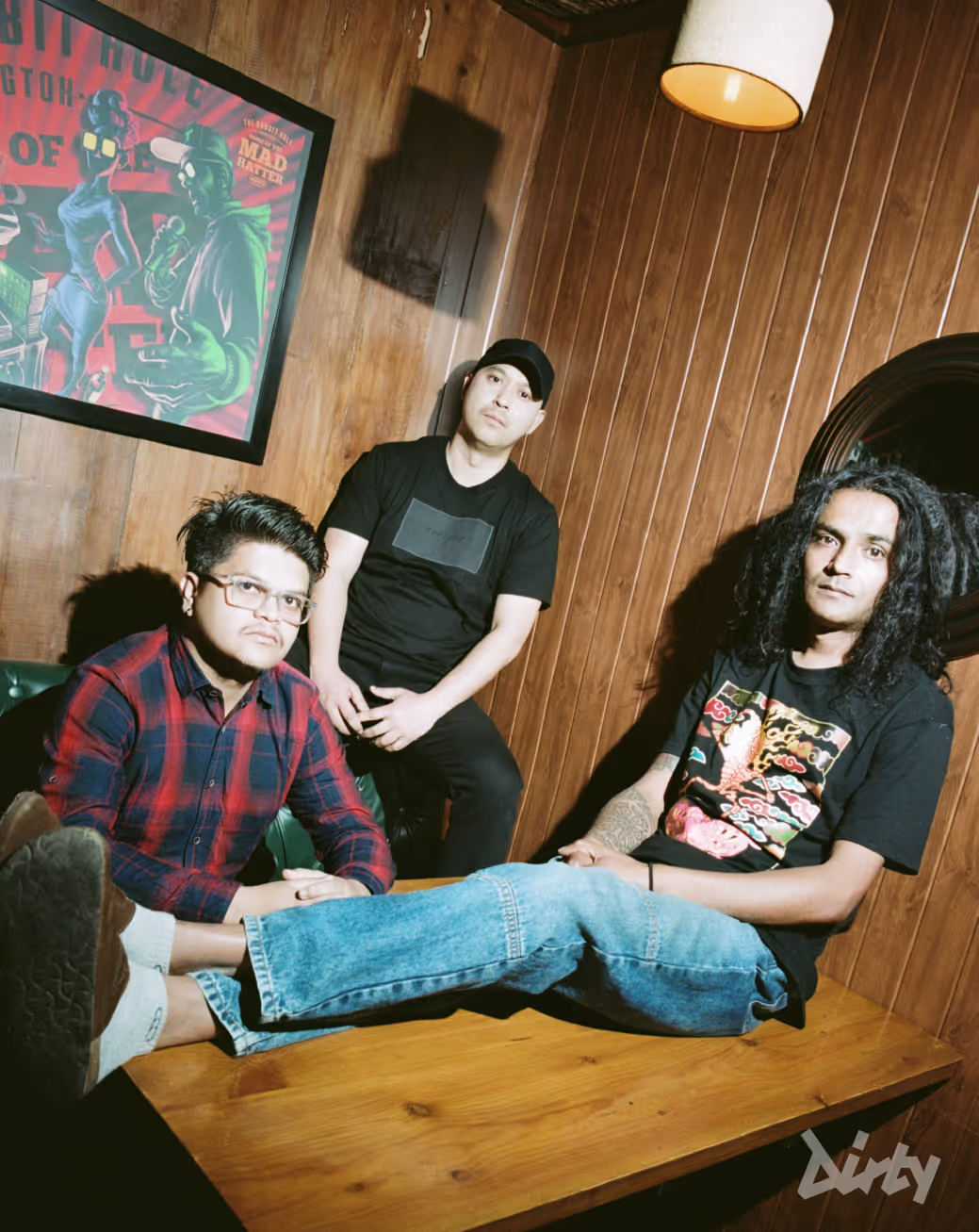

<h1 class="centre">“Our songs are about life,” says frontman Karma Tenrab. “When I started writing in 2003, I was an average guitar player, so I wrote reggae. I love reggae.” The modesty fits a band defined by its loose, unpolished style. Their lyrics are smooth, familiar, repetitive—sticky in a way that lingers. At festivals like Pine Tree, held in nearby Kurseong, and Hornbill Festival held in Nagaland, audiences chant them back word for word.</h1>
<h1 class="left">The members of Lasomungkup, another Sikkimese band, describe their 2024 Hornbill performance—presented in collaboration with the tribal arts initiative Samvaad—as a defining moment. There, they played Gnondet Mo (“Let’s live and flow like the Teesta River”), a Lepcha-language track that blends traditional rhythm with a rock structure. Like much of their work, it honours nature’s central place in Lepcha life.</h1>
<h1 class="left">The Lepchas are widely considered Sikkim’s original inhabitants. Their mythical sacred homeland, Mayel Lyáng (“hidden paradise”), once spanned much of the former kingdom of Sikkim. The band’s name pays tribute to Lasomung, a community ancestor credited with shaping the Lepcha calendar, rituals and the Namsoong festival. Lasomungkup translates to “those of Lasomung.”</h1>
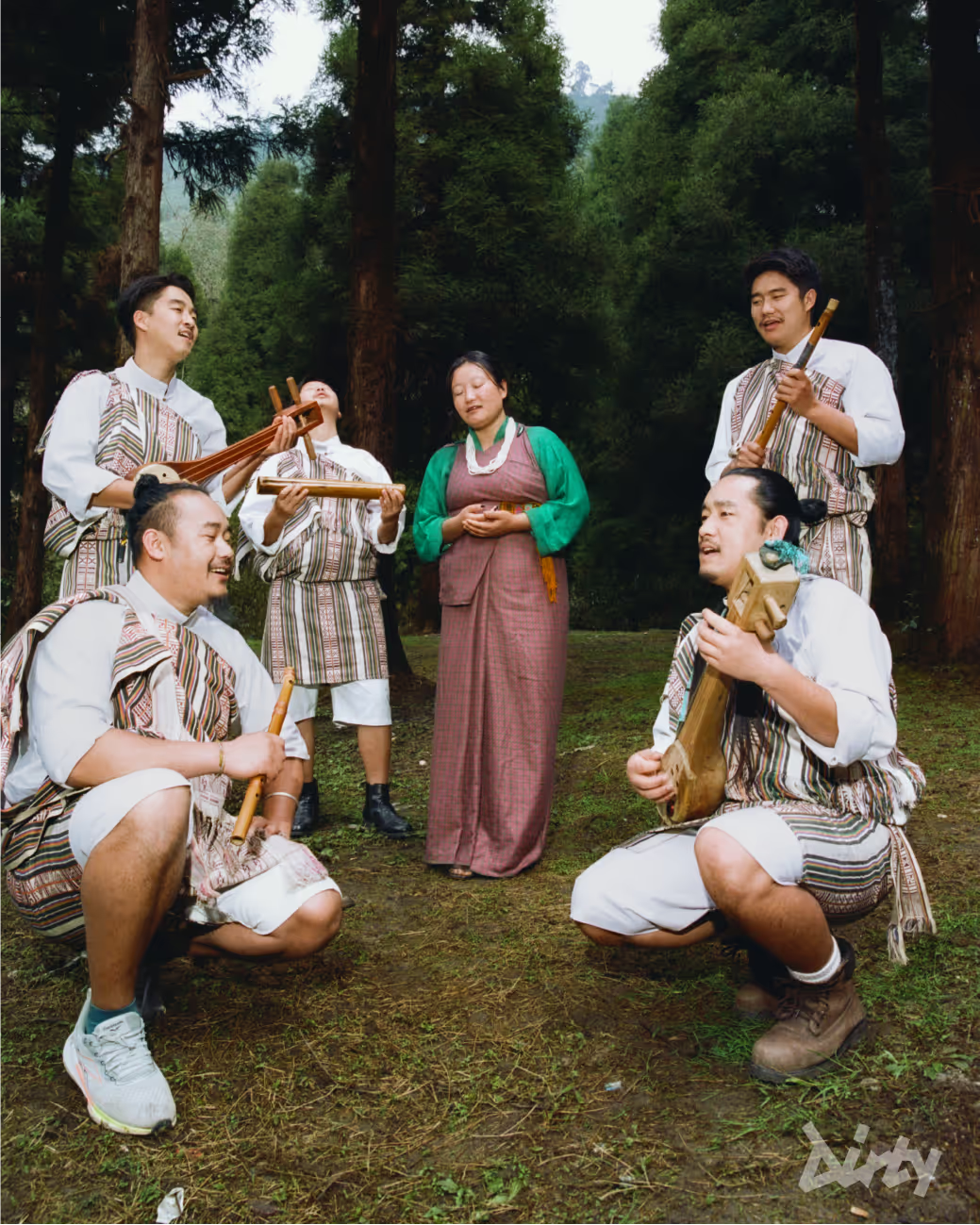
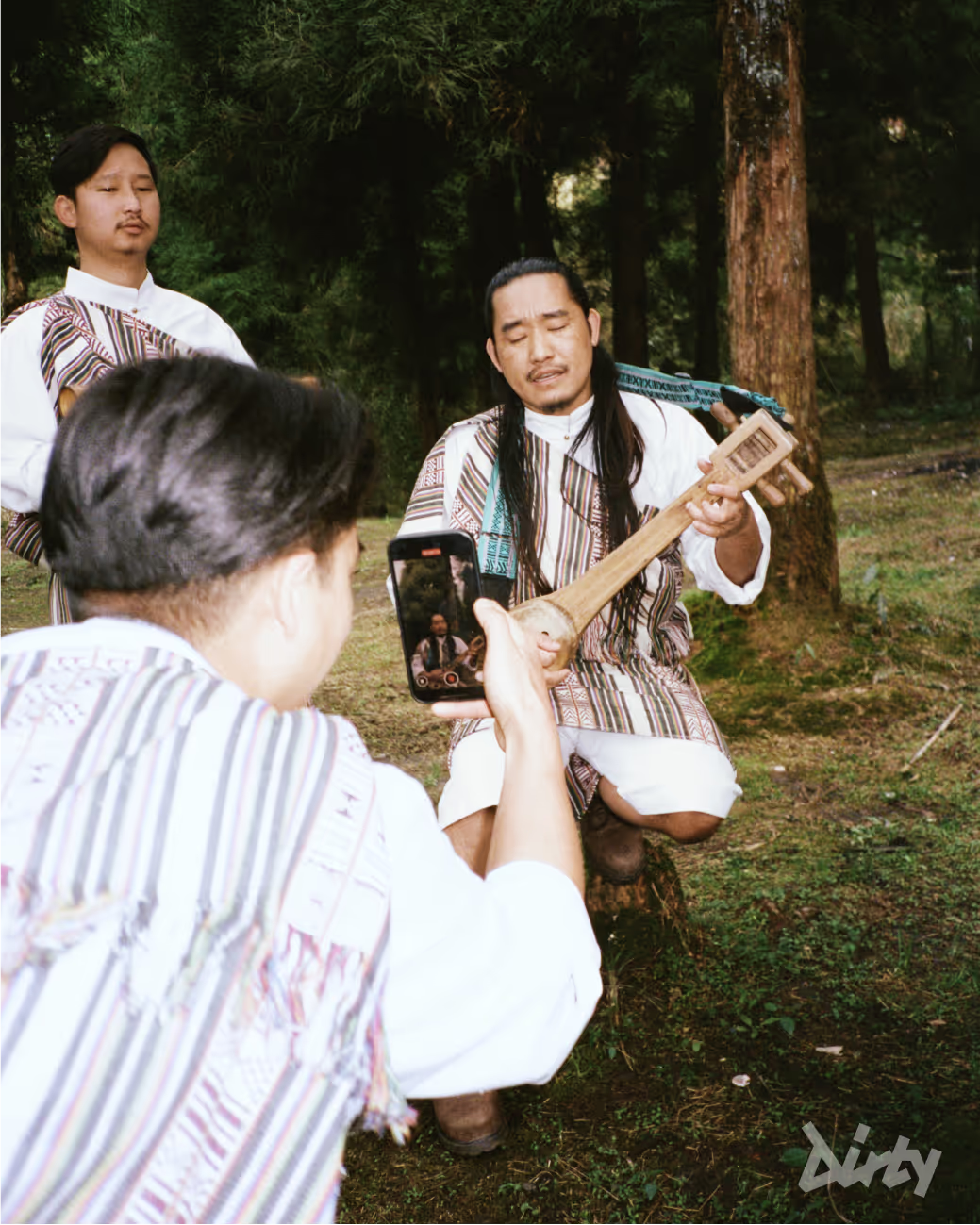
<h1 class="left">Though increasingly rare, the Lepcha language is still spoken across Sikkim, Darjeeling, eastern Nepal, and parts of Bhutan. It is seldom heard on large stages—but bands like Lasomungkup are fuelling a revival, bringing Lepcha music, myth, and worldview to new audiences. “We’re still in the early stages of our community’s musical journey,” the band says. “That’s why our people keep encouraging us—to make more music.”</h1>
<h1 class="centre">Another group working to preserve the Lepcha language through music is Sofiyum—“breeze” in Lepcha—an apt name for a band powered by revivalist persistence. Formed in 2011 by members of the Lepcha community, the group blends traditional instrumentation with contemporary rhythms in what they call “a near-perfect concoction,” meant to bridge generations of speakers and learners. “Music is how we bring everyone under one fold,” says founding member Ogyal Thering Lepcha.</h1>
<h1 class="centre">Their lyrics draw on the natural world and oral traditions passed down through families. In Kung Kung Go (“I will spread my wings and fly”), an eagle soars over ridges and cliffs, scattering local legends across villages. Chyokdae (“The Grave”) is more sombre—a dirge sung from the perspective of an onlooker mourning the damage wrought by unchecked infrastructure projects in the greater Himalayas.</h1>
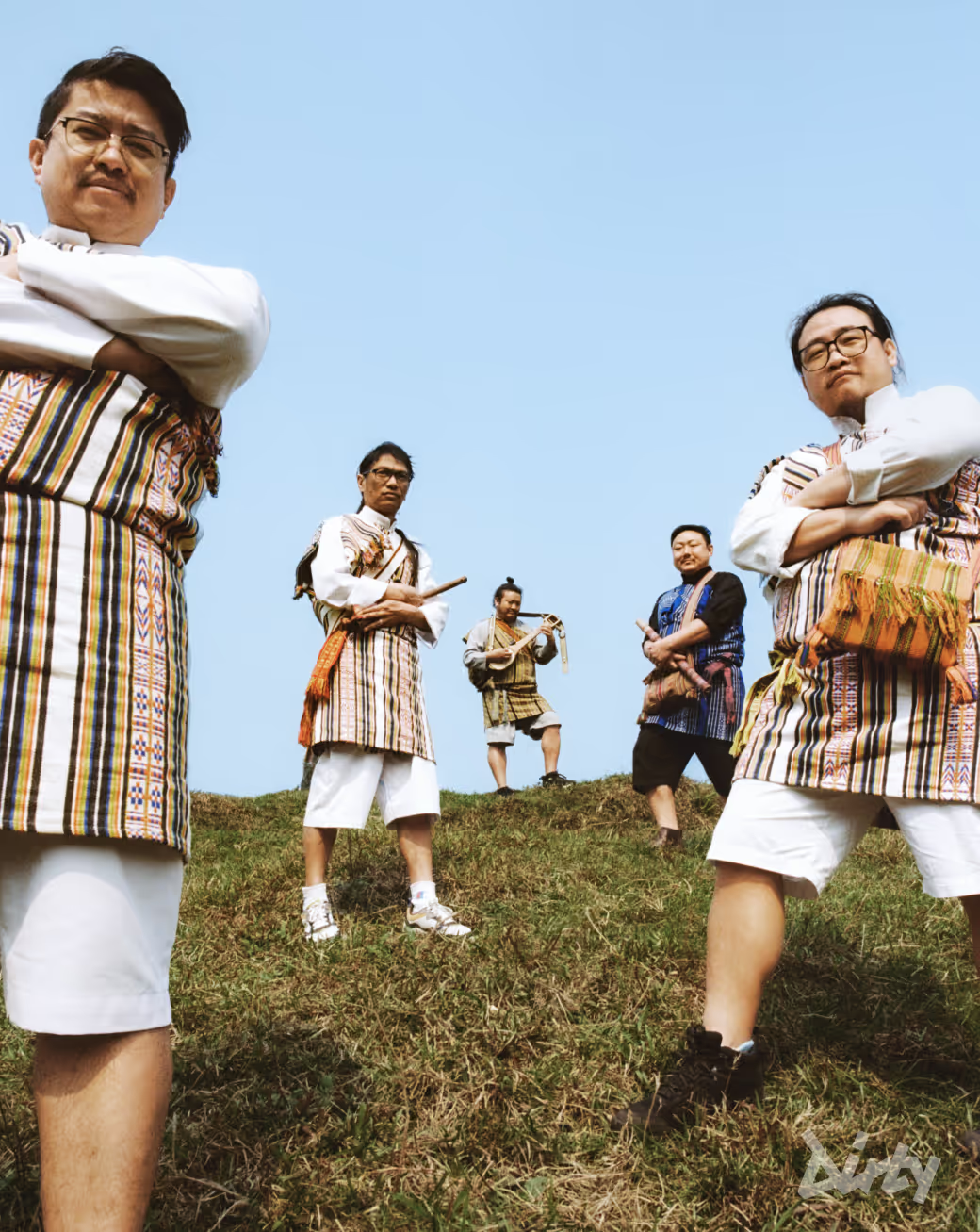

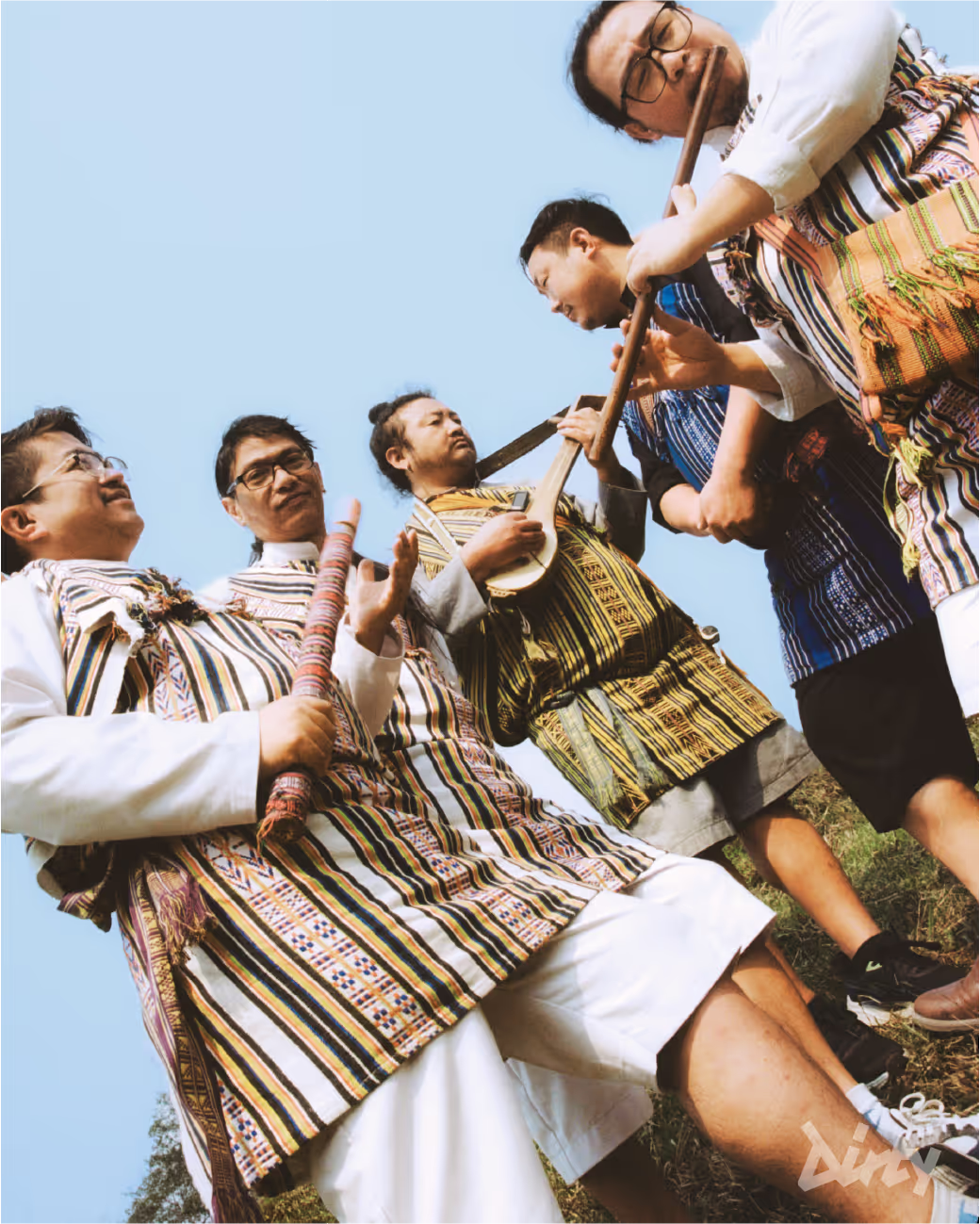
<h1 class="left">“Many things inspire me,” Lepcha says. “The mountains, rivers, birds, clouds, old folktales. But it’s the rediscovery of forgotten words that stirs the deepest feeling.” While Lepcha stands apart from other Himalayan tongues in having its own indigenous script, much of its vocabulary and oral tradition remains undocumented. Sofiyum’s tracks also blend guitar with Lepcha instruments like the Satsang—a four-stringed instrument carved from a single piece of wood, with a thin wooden membrane in place of leather.</h1>
<h1 class="left">“Sikkimese people are generally open to different genres,” Lepcha adds. “It feels good to know that Lepcha songs have found a place in their playlists.”</h1>
<h1 class="right">While folk and fusion acts are gaining ground in Sikkim, the music scene has long centred on rock and remains largely male-dominated. “Rock, especially in the band scene, is everywhere,” says Rubhi, an independent musician and producer formerly known as Abhibyanjana. “But as a woman, it can feel dense to navigate. There are very few female or non-binary voices here.”</h1>
<h1 class="right">Her latest EP, City of My Heart, spans four tracks that explore urban loneliness, displacement, and resilience across Gangtok, Pune, and Mumbai. “It’s almost incorporeal,” she explains, “with dreamy, deliberate soundscapes that build an ethereal world. It’s a very intimate portrayal of my inner life.”</h1>
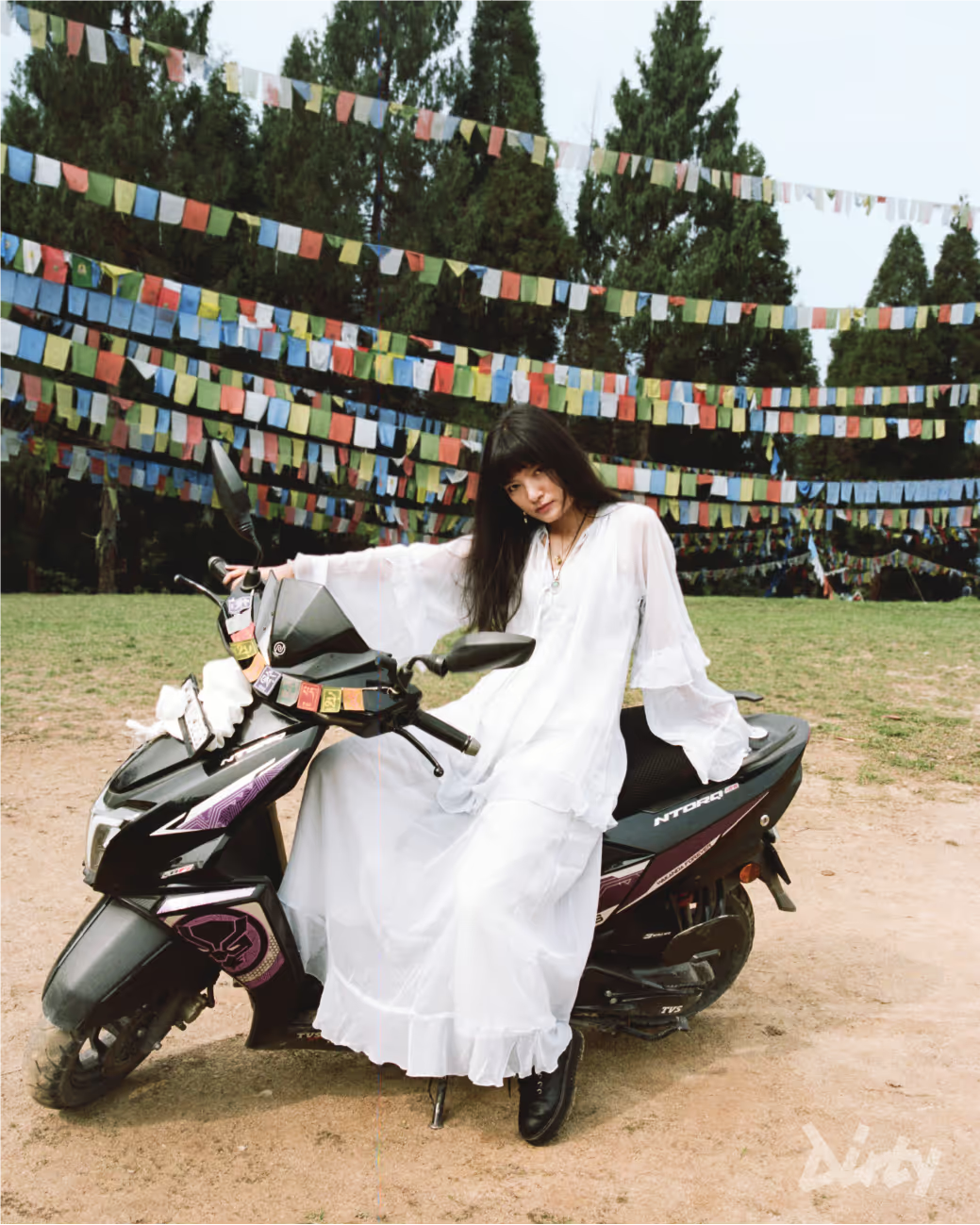

<h1 class="right">As younger musicians like her leave home to study or work elsewhere, they begin to view the region from a distance—recognising both its beauty and its limitations. Their work reflects a wider generational shift, moving away from idealising the environment towards more introspective explorations of identity, dislocation, and emotional memory.</h1>
<h1 class="right">Rubhi grew up in Gangtok surrounded by Western pop and rock, mostly in English. “I internalised the language in a way I’m now critical of, which is probably why I started writing mostly in English,” she says. “More recently, I’ve been incorporating Nepali into my music.”</h1>
<h1 class="right">“I accept that few people will listen to my music. I’m becoming more experimental, open to making music without worrying about what the audience thinks, as long as a small group supports each other.”</h1>
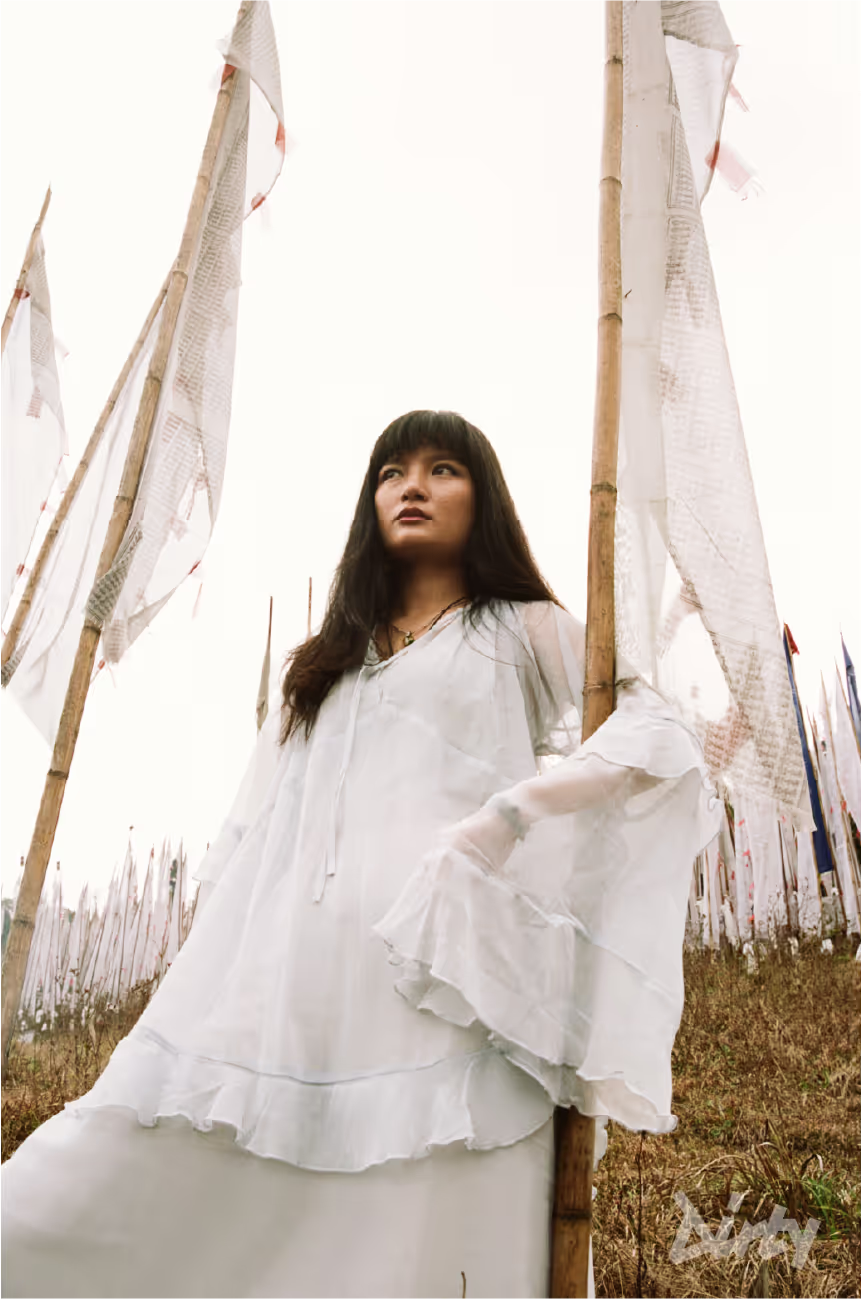
<h1 class="right">Despite the challenges, Rubhi remains optimistic about Sikkim’s musical culture. “There’s a sense that everyone here is involved with music—hardly anyone doesn’t know a single guitar chord. Music has long been woven into daily life through folk songs, ritual chants, and monastic hymns, creating a cultural affinity that feels deeply natural.”</h1>
<h1 class="left">Photographed by: Riccardo Dubitante</h1>
<h1 class="full">Most people wouldn’t associate cosmopolitanism with a small town like Darjeeling. But, in retrospect, I didn’t need to look for it in a big city. Nepali, Hindi, and English mingled fluidly in the hallways at my boarding school. Korea’s Hallyu wave of pop music echoed through dorm rooms alongside the latest English-language hits and the occasional Bhutanese or Tibetan track. At home, my parents went about their day humming to the tunes of rock classics on the radio—Janis Joplin, the Beatles, Bob Dylan. We never paused to theorise the cultural hybridity born of overlapping borders and, by extension, overlapping identities. It simply felt natural.</h1>
<h1 class="full">A few hours away, in Sikkim—where many of my classmates were from—the musical landscape was no less layered, though shaped by a different history. Once a Buddhist kingdom, Sikkim became part of India in 1975. Its Nepali-speaking majority now lives alongside indigenous Lepcha and Bhutia communities, each with its language, customs, and musical rhythms. While India’s cultural roots often reference the contrast of traditions from state to state, India’s Eastern region, while diverse in its origins, has an innate musical gene.</h1>
<h1 class="full">When the dirty team set out to travel across Sikkim, the agenda was to explore the cultural nerve centre of this expanse of luscious green topography. There amidst the indigenous crafts, the cross-pollination of style and substance, of quaint homes and cute grandmothers that cropped up on our social media feeds in search of the zeitgeist and their habitats, was a scene that instantly felt like the thread that bound this community together. Inside dimly lit cafes, indie girls who possibly worshipped Stevie Nicks and boys weaned on Bohemian Rhapsody, were perched on carpets, bopping their heads and whooping to an incospicuously dressed boy, belting notes from a set of pipes that could belong to a potential star in the making. This is a weekend ritual of sorts. A purpose that makes them come together in celebration.</h1>
<h1 class="full">In Sikkim, weekends see youngsters gathering at local watering holes for a jamming session— a homegrown band will perform, and the spectators sitting on the floor would whoop and clap to the beat. Music invariably just courses through the veins of the land. But it goes beyond being treated as a knitting hobby to collect aura points.</h1>
<h1 class="full">Consider Girish and The Chronicles, a rock band from Gangtok, whose recent thunderous rendition of Adele’s “Set Fire to the Rain” (2011) on America’s Got Talent captured international attention. Their rise marks part of a broader artistic resurgence in the landscape. Sikkimese musicians now compose in Nepali, Lepcha, Bhutia, and English, often blending languages and styles into hybrid forms that resist the flattening homogeneity so often expected of remote regions. A kind of musical spring is underway, asserting Sikkim’s place as a cultural nerve centre of Himalayan cosmopolitanism.</h1>
<h1 class="full">Salakhala, a Sikkimese band formed in 2017, takes its name from a Nepali word used by vegetable sellers. “Salakhala” means you don’t get to choose—whatever the scale scoops up, bruised or fresh, is what you take. That sense of accepting what comes runs through their reggae-tinged songs, sung in colloquial Nepali.</h1>
<h1 class="full">Their lyrics often feel like overheard conversations—paintingoffering vignettes of daily life and subtle social critique. One of their best-known tracks, Ek Peg, addresses alcoholism: “Bhai, malai ek peg haali-deu. Ghar jaana man chaina malai. Buji deu.” (“Brother, pour me a peg. I don’t want to go home. Please understand.”) Another, Paltan (“Army”), mimics the bark of drills—“Chhati kholai, kando tight – left right left right” (Chest opened, bum tight—left right left right)—an intimate reflection nod to of the region’s long history of military enlistment and migration.</h1>


<h1 class="full">“Our songs are about life,” says frontman Karma Tenrab. “When I started writing in 2003, I was an average guitar player, so I wrote reggae. I love reggae.” The modesty fits a band defined by its loose, unpolished style. Their lyrics are smooth, familiar, repetitive—sticky in a way that lingers. At festivals like Pine Tree, held in nearby Kurseong, and Hornbill Festival held in Nagaland, audiences chant them back word for word.</h1>
<h1 class="full">The members of Lasomungkup, another Sikkimese band, describe their 2024 Hornbill performance—presented in collaboration with the tribal arts initiative Samvaad—as a defining moment. There, they played Gnondet Mo (“Let’s live and flow like the Teesta River”), a Lepcha-language track that blends traditional rhythm with a rock structure. Like much of their work, it honours nature’s central place in Lepcha life.</h1>
<h1 class="full">The Lepchas are widely considered Sikkim’s original inhabitants. Their mythical sacred homeland, Mayel Lyáng (“hidden paradise”), once spanned much of the former kingdom of Sikkim. The band’s name pays tribute to Lasomung, a community ancestor credited with shaping the Lepcha calendar, rituals and the Namsoong festival. Lasomungkup translates to “those of Lasomung.”</h1>


<h1 class="full">Though increasingly rare, the Lepcha language is still spoken across Sikkim, Darjeeling, eastern Nepal, and parts of Bhutan. It is seldom heard on large stages—but bands like Lasomungkup are fuelling a revival, bringing Lepcha music, myth, and worldview to new audiences. “We’re still in the early stages of our community’s musical journey,” the band says. “That’s why our people keep encouraging us—to make more music.”</h1>
<h1 class="full">Another group working to preserve the Lepcha language through music is Sofiyum—“breeze” in Lepcha—an apt name for a band powered by revivalist persistence. Formed in 2011 by members of the Lepcha community, the group blends traditional instrumentation with contemporary rhythms in what they call “a near-perfect concoction,” meant to bridge generations of speakers and learners. “Music is how we bring everyone under one fold,” says founding member Ogyal Thering Lepcha.</h1>
<h1 class="full">Their lyrics draw on the natural world and oral traditions passed down through families. In Kung Kung Go (“I will spread my wings and fly”), an eagle soars over ridges and cliffs, scattering local legends across villages. Chyokdae (“The Grave”) is more sombre—a dirge sung from the perspective of an onlooker mourning the damage wrought by unchecked infrastructure projects in the greater Himalayas.</h1>



<h1 class="full">“Many things inspire me,” Lepcha says. “The mountains, rivers, birds, clouds, old folktales. But it’s the rediscovery of forgotten words that stirs the deepest feeling.” While Lepcha stands apart from other Himalayan tongues in having its own indigenous script, much of its vocabulary and oral tradition remains undocumented. Sofiyum’s tracks also blend guitar with Lepcha instruments like the Satsang—a four-stringed instrument carved from a single piece of wood, with a thin wooden membrane in place of leather.</h1>
<h1 class="full">“Sikkimese people are generally open to different genres,” Lepcha adds. “It feels good to know that Lepcha songs have found a place in their playlists.”</h1>
<h1 class="full">While folk and fusion acts are gaining ground in Sikkim, the music scene has long centred on rock and remains largely male-dominated. “Rock, especially in the band scene, is everywhere,” says Rubhi, an independent musician and producer formerly known as Abhibyanjana. “But as a woman, it can feel dense to navigate. There are very few female or non-binary voices here.”</h1>
<h1 class="full">Her latest EP, City of My Heart, spans four tracks that explore urban loneliness, displacement, and resilience across Gangtok, Pune, and Mumbai. “It’s almost incorporeal,” she explains, “with dreamy, deliberate soundscapes that build an ethereal world. It’s a very intimate portrayal of my inner life.”</h1>


<h1 class="full">As younger musicians like her leave home to study or work elsewhere, they begin to view the region from a distance—recognising both its beauty and its limitations. Their work reflects a wider generational shift, moving away from idealising the environment towards more introspective explorations of identity, dislocation, and emotional memory.</h1>
<h1 class="full">Rubhi grew up in Gangtok surrounded by Western pop and rock, mostly in English. “I internalised the language in a way I’m now critical of, which is probably why I started writing mostly in English,” she says. “More recently, I’ve been incorporating Nepali into my music.”</h1>
<h1 class="full">“I accept that few people will listen to my music. I’m becoming more experimental, open to making music without worrying about what the audience thinks, as long as a small group supports each other.”</h1>

<h1 class="full">Despite the challenges, Rubhi remains optimistic about Sikkim’s musical culture. “There’s a sense that everyone here is involved with music—hardly anyone doesn’t know a single guitar chord. Music has long been woven into daily life through folk songs, ritual chants, and monastic hymns, creating a cultural affinity that feels deeply natural.”</h1>
<h1 class="full">Photographed by: Riccardo Dubitante</h1>